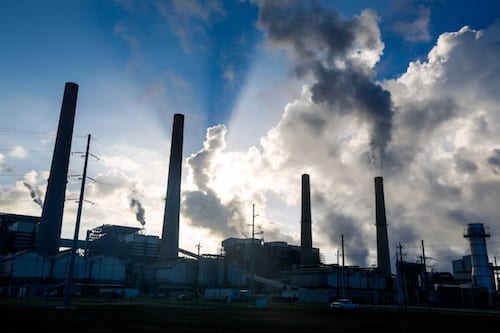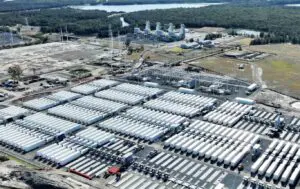Depending on who you ask, carbon emissions in Australia are either rising, or falling. What is undeniable is that recent increases in emissions from Australia’s fossil fuel exports dwarf any domestic reductions.
Global emissions released overseas from coal and gas exported from Australia have more doubled since 2000, and are now more than double Australia’s domestic emissions.
Whether domestic emissions are increasing or not depends largely on what benchmark year you use. For example, they are down since 2005 (the year used as a benchmark in the Paris Climate Change Agreement), but up since 2013 (when Australia had a carbon price).
Domestic emissions in 2018 were 69 Megatonnes (Mt) below the 2005 benchmark, but 23 Mt higher than Australia’s 2013 level. So, without question, domestic carbon emissions have risen in recent years.
Australia’s target is to reduce emissions by 2030 to 26-to-28 per cent below the 2005 level. To hit the target, Australia would need to emit at least 158 Mt less carbon in 2030 than in 2005. At the moment this seems unlikely without new climate-change policies.
By contrast, unburned carbon in Australia’s fossil fuel exports are up whatever benchmark you pick, as shown in Figure 1. Australia’s exported carbon has more than doubled from 500 Mt in 2000 to over 1,100 Mt in 2018.
Global emissions from Australia’s exported carbon are now more than double our total domestic carbon emissions from all sectors.
There are some differences in trends between Australia’s three main fossil fuel exports: thermal coal (burned to create electricity or heat), metallurgical coal (used to make steel) and liquefied natural gas (LNG), as shown in Figure 2. In general LNG has grown faster than coal, but from a smaller base.
Coal still makes up a much larger share of Australia’s unburned, exported carbon than LNG.
Between 2000 and 2018, thermal coal exports increased by 140 per cent, or nearly 300 Mt more global carbon emissions per year. Metallurgical coal exports increased by 74 per cent, or 200 Mt more global carbon emissions per year. LNG exports increased eight-fold, from about 20 Mt of emissions per year in the early 2000s to 165 Mt in 2018.
Only carbon emissions within Australia are counted towards Australia’s target. Under international emissions accounting rules, Australia is not directly accountable for the emissions from our exports.
A small portion of Australia’s gas emissions may be used to make plastics and therefore do not produce emissions. But the vast majority of our coal and gas exports are burned and release carbon emissions.
Nor is Australia directly responsible for the emissions that produced our imports. Indeed, Australians benefit from some of those emissions because the fuel is used to produce our imported cars, iPhones and computers.
It makes sense to account for emissions based on where they are produced, rather than where fossil fuels were mined or where manufactured goods are sold.
The global economy is too complex to tie all emissions to either their point of origin or their end-users. But the rise in exported carbon within fossil fuels from Australia highlights the importance of all countries moving in lock-step to tackle climate change.












